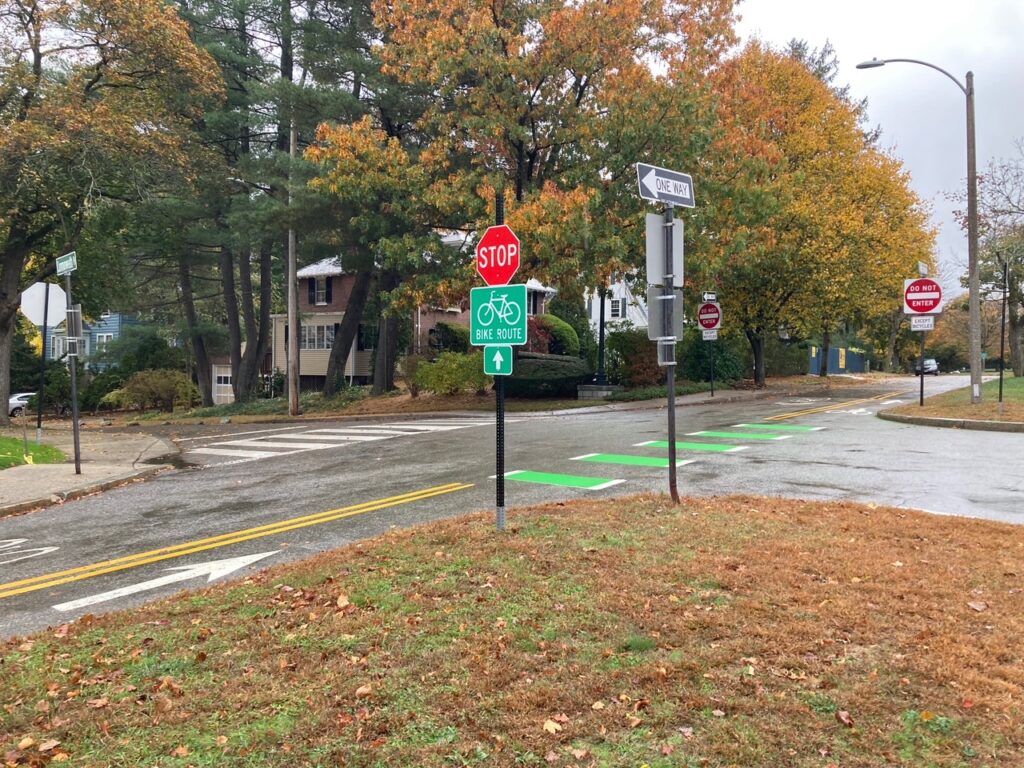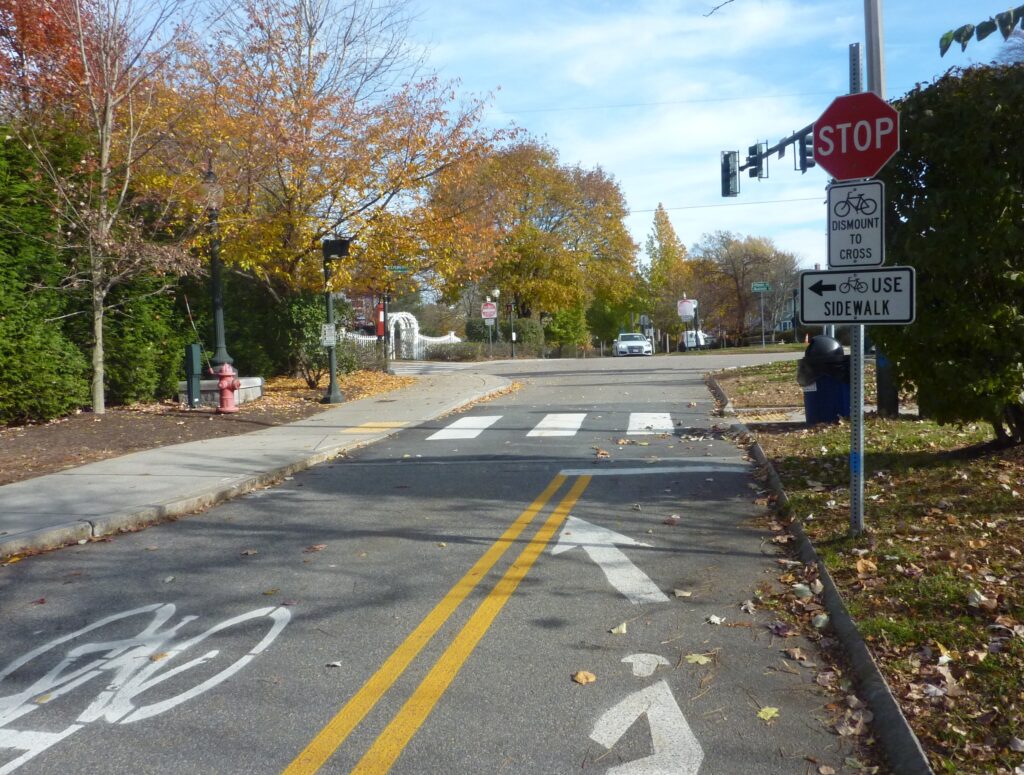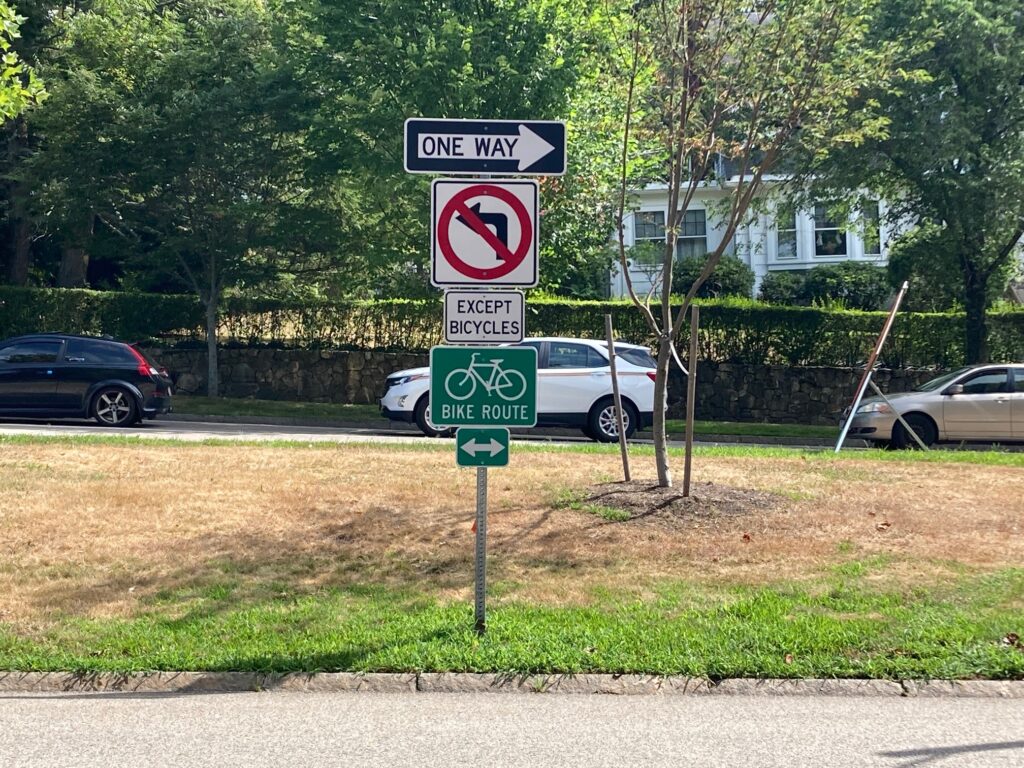Bicycle/Pedestrian Priority Roadway
With the approval of bicycle travel in the eastbound direction by PS&TC and Traffic Council, and modifications to the Carriage Road, the Carriage Road became, officially, according to MassDOT, a “Bicycle/Pedestrian Priority Roadway” or “Shared Street.”
What is a Bicycle/Pedestrian Priority Roadway? This is a trail or roadway which “permit(s) bicycle travel; however, bicycles are not the exclusive travel mode permitted”.
To read the history of how this was approved, click here. Once two-way bicycling on the Carriage Road was approved, the City undertook the following steps:
The first step was to remove cobbles. At first, some were not happy with that decision, but as you can see in the photos below, it has made for a safer pedestrian and bicycle usage. Furthermore, as the first step to a promenade and linear park, it allows for future landscaping and beautification options along the berm itself.
The installation of signage for the new two-way Carriage Road project then followed. On the east, it begins at Mt. Alvernia St. and the western terminus is Lyons Field. Soon, contractors painted preliminary striping. Signage depending on whether the intersection was non-signalized, signalized, or a T-intersection. See below.
Non-signalized intersections
Non-signalized intersections generally have a standard stop sign.

Signalized intersections
Signalized intersections such as Grant, Hammond, Chestnut and others ask the eastbound bicyclist to dismount from the bicycle and proceed across the street as a pedestrian. Future major Capital Improvement Plan projects at signalized intersections will include a Bike Crossing light.

T-intersections
T-intersections such as Nobscott, Prentice, Hobart, Commonwealth Park West and several others have this signage along the berm for approaching vehicles to see:

